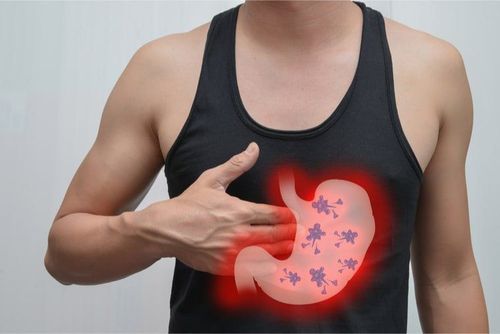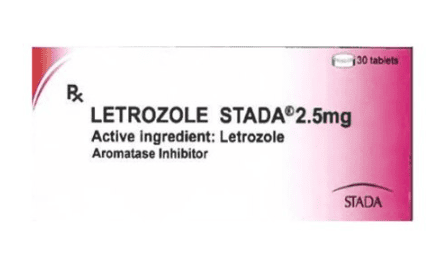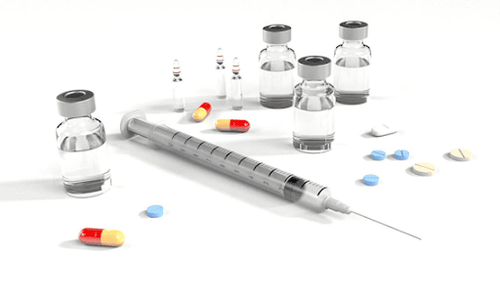This is an automatically translated article.
Chemotherapy is one of the most common breast cancer treatments. The purpose of chemotherapy for breast cancer is to weaken, stop, or slow the growth of cancer cells. So how does chemotherapy for breast cancer work?
1. What is chemotherapy for breast cancer?
Chemotherapy or chemotherapy for breast cancer is the use of drugs to weaken, stop, or slow the growth of cancer cells. Chemotherapy for breast cancer is a systemic therapy because the drug enters the bloodstream and affects the entire body.Breast cancer cells grow and divide faster than normal healthy cells. Chemotherapy affects cells that divide quickly, so chemotherapy drugs tend to affect cancer cells more than normal cells. However, chemotherapy drugs are often very potent and can damage healthy cells, especially normal but fast-growing and dividing cells (such as those inside the body). mouth and intestinal tract or hair germ cells).
Drugs or chemotherapy for breast cancer can be introduced into the body in a variety of ways, including:
Injections or continuous intravenous infusions; Subcutaneous or intramuscular injection; Orally, as a tablet, capsule or oral solution. There are many types of chemotherapy for breast cancer that have been used, some breast cancer chemotherapy regimens can be two or more types of chemotherapy together. In addition, depending on the characteristics of breast cancer, chemotherapy may be combined with other treatments, hormone therapy, radiation therapy, targeted therapy, or immunotherapy.
2. Mechanism of chemotherapy for breast cancer
Breast cancer chemotherapy drugs work to stop or slow down the growth of breast cancer cells through the mechanism of destruction or inhibition of cell division.
Breast cancer cells often grow, divide very quickly, out of control and out of order. Because of their rapid growth and division, cancer cells sometimes break away from the original tumor and travel to other places in the body.
Breast cancer chemotherapy has to travel throughout the body through the blood vessels, so this method can both affect the cancer cells in the primary tumor and act as they travel throughout the body.
Chemotherapy for breast cancer works best on rapidly dividing cells, such as malignant cells. Most normal, healthy cells grow and divide in an orderly, correct manner, so they are not affected by chemotherapy drugs. However, there are some healthy cells that divide rapidly, such as:
Hair follicle cells; nail cells; Cells in the oral cavity; Cells in the digestive tract; Bone marrow cells. Therefore, chemotherapy can affect these fast dividing normal cells, which can lead to side effects such as hair loss, nausea and vomiting.
3. How does chemotherapy for breast cancer work?
Doctors can give breast cancer chemotherapy in different ways to treat all stages of the disease. Whether or not chemotherapy is given depends on the characteristics of the breast cancer, the patient's health history, and the patient's wishes.
3.1. Chemotherapy after surgery for early breast cancer Chemotherapy after surgery for early breast cancer is also called adjuvant therapy, which aims to kill any cancer cells that remain or have moved to other areas of the body. These single malignant cells are too small to be seen in imaging. Adjuvant chemotherapy for breast cancer reduces the risk of cancer recurrence.
Doctors do not recommend chemotherapy after surgery for early breast cancer for all patients. This therapy should be done in the following cases:
Cancer cells are found in the lymph nodes near the affected breast; Cancers with more aggressive features, such as hormone receptor negative or HER2 positive; Patients are premenopausal women because breast cancer in this group tends to have more severe flare-ups. Gene tests analyze a tumor sample to see how active certain genes are. The level of activity of these genes affects the behavior of the cancer, including its ability to grow and metastasize. If the indication for adjuvant chemotherapy is not clear, the doctor may recommend tumor genetic testing to make treatment decisions for the patient.
3.2. Preoperative chemotherapy for early breast cancer Chemotherapy for breast cancer before surgery for early breast cancer is also known as adjuvant pretreatment. Chemotherapy before surgery has the effect of shrinking large cancerous tumors with the following purposes:
Create the best conditions for the surgeon to completely remove the tumor; Reducing the size of surgery, such as removing only the tumor instead of removing the entire breast; Reducing the number of cancer cells in the lymph nodes, allowing the surgeon to operate on fewer lymph nodes; Limit the risk of recurrence. Pre-adjuvant therapy also allows the doctor to see how well the malignant cells are responding to chemotherapy for breast cancer. If adjuvant pre-treatment is not responding, it will tell your doctor that other drugs need to be used to treat breast cancer.
Again, preoperative chemotherapy for full-stage breast cancer is not recommended for all breast cancer patients. This method is recommended for the following cases:
There is inflammatory breast cancer; HER2-positive breast cancer; Triple negative breast cancer; Large breast cancer; Grade 3 breast cancer; Breast cancer metastasis to lymph nodes. 3.3. Chemotherapy for stage 2, terminal, and metastatic breast cancer End-stage breast cancer is cancer that has spread beyond the breast to nearby tissues, such as the skin or chest wall. When cancer cells spread to distant parts of the breast, such as the bones or spine, it is called metastatic breast cancer.
Depending on where the breast cancer has spread, surgery to remove the cancer may not be an option. In this case, chemotherapy may be the mainstay of treatment and is often used in combination with other therapies, such as targeted therapy or immunotherapy.
If the terminal or metastatic cancer recurs - that is, the patient was previously diagnosed with early stage breast cancer and it has recurred - the doctor considers all chemotherapy options first that the patient used to develop a treatment plan.
4. Combination breast cancer chemotherapy
There are many types of chemotherapy for breast cancer that have been used. In most cases of early breast cancer, your doctor will recommend a combination of 2 or 3 chemicals, depending on the characteristics of the cancer. The combination of chemicals is called a chemotherapy regimen, and there are now several standard regimens that doctors commonly use for early-stage breast cancer.
For advanced breast cancer, chemotherapy drugs are often used alone, but in some cases a combination is still needed.
There are many types of chemotherapy for breast cancer that have been used, of which 2 are used quite often for early-stage cancer and many standard regimens include drugs from 1 or both of these groups:
Anthracyclines that kill cancer cells by damaging genes and interfering with how cells divide and multiply, including Adriamycin (active ingredient Doxorubicin), Doxil (active ingredient Doxorubicin), Daunorubicin, Ellence (active ingredient Epirubicin) and Mitoxantrone are anthracycline drugs commonly used in chemotherapy for breast cancer ; Taxanes that interfere with the ability of cancer cells to divide, including Taxol (active ingredient Paclitaxel), Abraxane (active ingredient albumin-bind or nab-paclitaxel) and Taxotere (active ingredient Docetaxel) are commonly used chemicals. . Standard chemotherapy regimens for early breast cancer include:
AT: Adriamycin and Taxotere; AC ± T: Adriamycin combined with Cytoxan (active ingredient Cyclophosphamide) with or without Taxotere or Taxol; CMF: Cytoxan, Methotrexate and Fluorouracil; CEF: Cytoxan, Ellence and Fluorouracil; FAC: Fluorouracil, Adriamycin and Cytoxan; CAF: Cytoxan, Adriamycin and Fluorouracil; FAC and CAF regimens have the same chemotherapy drugs, but the dosage and frequency of use are different; TAC: Taxotere, Adriamycin and Cytoxan; GET: Gemzar, Ellence and Taxol.
5. What happens during chemotherapy for breast cancer?
Only some chemotherapy drugs are used to treat breast cancer orally in pill form, either subcutaneously or intramuscularly, most chemicals are administered by intravenous injection or intravenous infusion over a period of time. time.
Breast cancer chemotherapy is done in cycles, including a treatment phase and a recovery phase. Therefore, many patients will have chemotherapy on the first day and then have 3 weeks of recovery without treatment. A chemotherapy regimen for breast cancer will involve several cycles, and the number of cycles and the total duration of each regimen will depend on the type of chemotherapy used, but most regimens will have a duration of 3 to 6 months.
In some cases, if the cancer is considered advanced, doctors may recommend a more intensive chemotherapy regimen, meaning the infusions take place more often, like every 2 weeks instead of 3 once a week.
6. Side effects of breast cancer chemotherapy
The side effects of chemotherapy for breast cancer depend on the treatment regimen, the number of treatment cycles and the patient's overall health. It should be noted that side effects may vary between patients taking the same regimen.
There are drugs that can help reduce the side effects of breast cancer chemotherapy. It is important that patients tell their doctor about any side effects they are experiencing. If one medication doesn't control side effects, you may need to try different medications.
Most of the side effects of chemotherapy are short-term and go away after the therapy ends. However, some chemotherapy drugs for breast cancer can cause long-term side effects and require constant monitoring.
It is very important for patients to know that it is not possible to judge the effectiveness of chemotherapy based on side effects alone. Some people think that if side effects are more severe, chemotherapy is more effective, or no side effects mean chemotherapy is not working. This is a hugely misleading view because side effects have nothing to do with how effective chemotherapy is.
When patients and doctors decide to perform a chemotherapy regimen for breast cancer, the benefits and side effects need to be weighed.
Some of the most common short-term side effects of chemotherapy for breast cancer:
Anemia, decreased red blood cell count; Change in appetite; Constipation ; Diarrhea; Tired; Hair loss; Increased risk of infection; Low white blood cell count; Memory and thinking problems (known by many as chemo brain); Menopause symptoms, including hot flashes; Mouth and throat ulcers; Change nails; Nausea; Neurological disease, such as damage to the nerves in the hands and feet; Changes in taste and smell; Vaginal dryness; Vomiting; Weight change. The long-term side effects of chemotherapy for breast cancer and sometimes more serious, include:
Infertility : Some types of breast cancer chemotherapy affect the ovaries and can make a woman sick. Females stop ovulating and amenorrhea. In some cases, the condition can be permanent, making it impossible to get pregnant without assisted reproduction. In men, rapidly dividing sperm cells are affected by chemical drugs. If all spermatogenic stem cells are damaged to the point where they cannot produce mature sperm, permanent infertility will result; Bone loss, thinning of bones: Women who go through early menopause due to chemotherapy are often at increased risk of osteoporosis, bone loss with lower bone density than normal; Heart damage: Anthracycline chemotherapy agents for breast cancer, including Adriamycin, Doxil and Ellence, can cause cardiotoxicity. If you have been treated with anthracycline or other chemicals that can damage the heart, your doctor may recommend that you monitor your heart function regularly; Leukemia: In rare cases, chemotherapy for breast cancer can lead to secondary cancers, like leukemia, years after chemotherapy ends.
Please dial HOTLINE for more information or register for an appointment HERE. Download MyVinmec app to make appointments faster and to manage your bookings easily.
References: breastcancer, iconcancercentre













